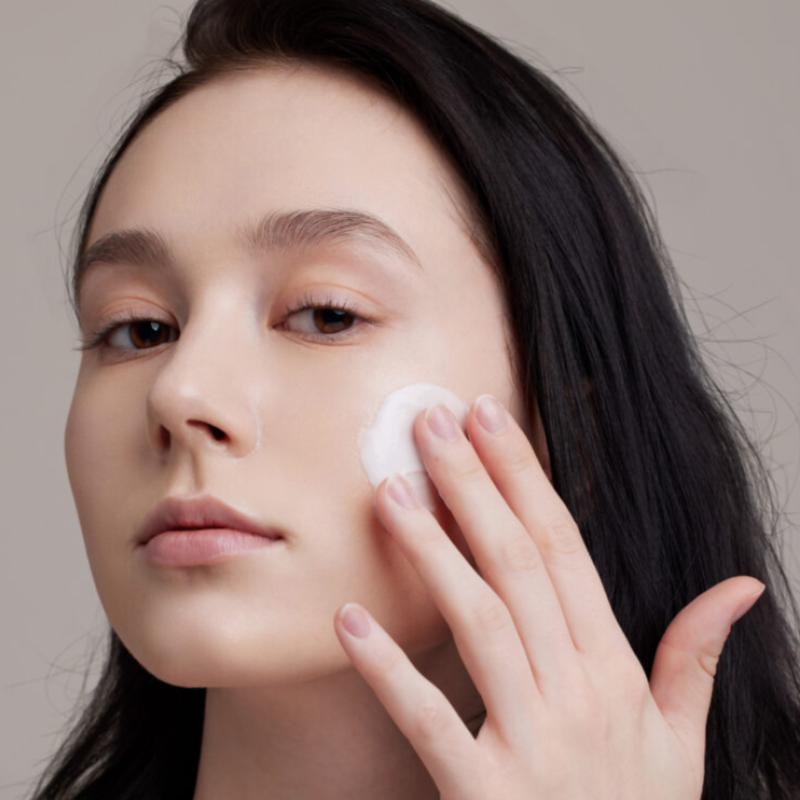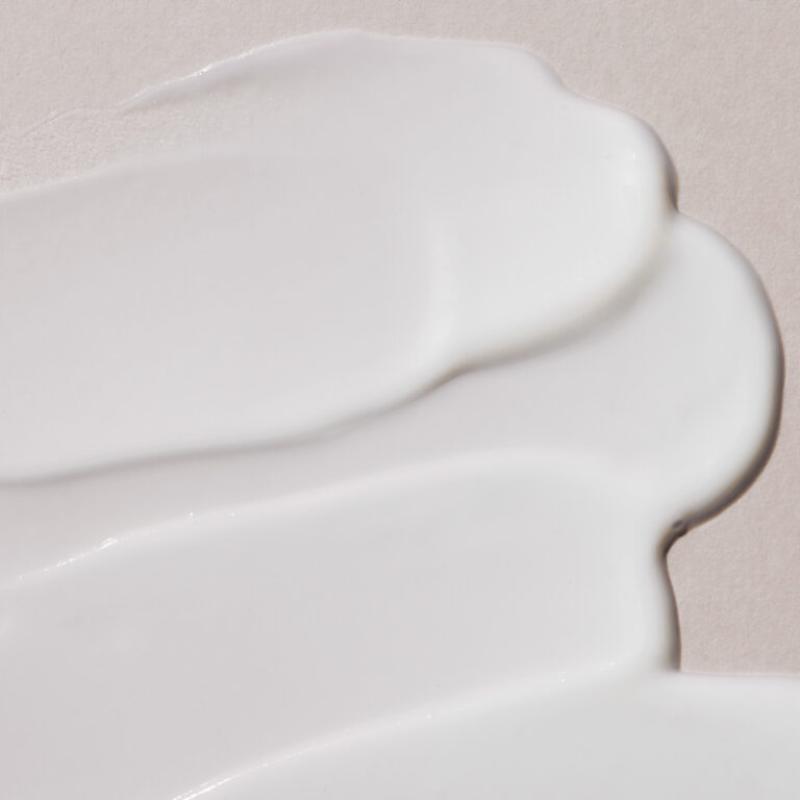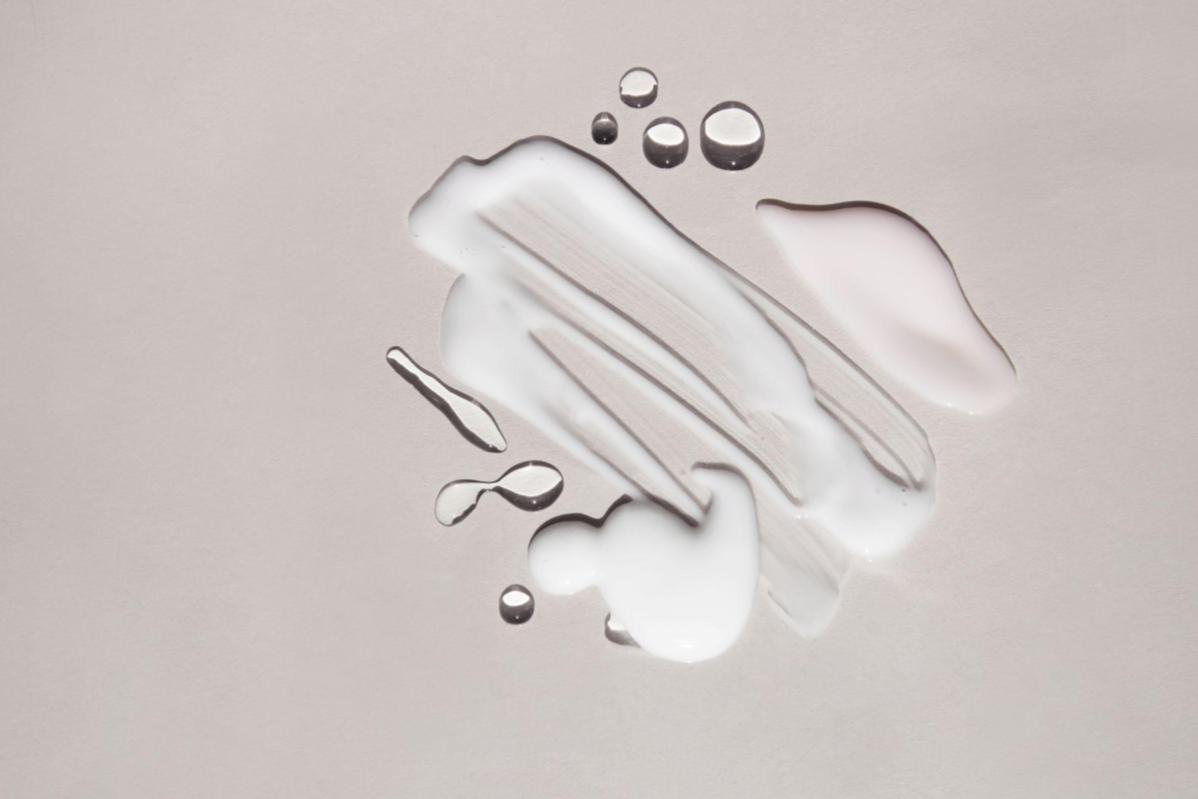A milk cleanser is a cleansing product for the face. Uniquely mild and gentle on the skin, it will not deplete your skin’s natural oils. In fact, it will focus on keeping the skin smooth, clear, organically hydrated, and moisturised.
Although milder than a usual cleanser, it has a decisive cleansing action to remove debris and impurities from your skin. When you apply a layer of milk cleanser, it allows the product to penetrate the skin and deep into your pores, removing dirt or makeup from your face. Pro-tip: adapt the double cleanse method of using a milk cleanser for a first general cleanse, wash off, then repeat.
Not only will a double-cleanse clean your skin twice by removing the first layer of makeup, this also allows ingredients to absorb while reducing purging or skin irritation. Read on for more benefits of incorporating a milk cleanser in your everyday skincare routine.
4 Steps of Using Milk Cleanser

Consider using a milk cleanser at night if the next day sees you leaving the house and exposed to pollution, grime, or makeup. Additionally, you can incorporate a milk cleanser into your morning and evening skincare routine. If you want to start slow with a milk cleanser, gently include it in your skincare routine. Consider our four tips on making the most of a milk cleanser:
- First, apply milk cleanser on the moistened skin of your face and neck.
- Massage your face gently using your fingers in circular motions, avoiding eyes.
- Rinse off with lukewarm water and pat your face dry with a clean towel.
- Apply your toner or serums after cleansing to lock in the goodness.
Milk Cleanser Ingredients

Most milk cleansers have natural ingredients as it works better on the skin, reducing irritations for those who have sensitive skin. For example, a milk cleanser can incorporate rosehip oil, grapefruit extract, royal jelly, sesame seed oil, jojoba oil, rose extract, olive oil, vitamin e, aloe vera extract among its natural ingredients.
Made from mainly oils extracted from plants, fruits or flowers, they are packed with antioxidants and vitamins that nourish the skin while effectively removing impurities. Furthermore, these natural oils such as rosehip oil, have anti-ageing properties that smoothen wrinkles or creases on the face. Fruit extracts such as grapefruit extract are beneficial in brightening the face to reveal a radiant glow.
Is Milk Cleanser Good For Oily Skin?

Milk cleansers work well on a variety of skin types. Not only are they beneficial for dry and mature skin, sealing in moisture and hydration, they are also gentle enough for sensitive, oily, or acne-prone skin.
Salicylic acid and other drying chemicals commonly used to treat acne tends to dry out skin. So, if you’re also using products for acne and oil, think about using a milk cleanser to keep things balanced and hydrated. Milky cleansers also maintain the skin’s pH balance especially for oily skin types.
Cleansing Milk VS Cleanser

There are a range of differences between cleansing milks and regular cleansers: from texture and packaging to ingredients and so on, here’s how you tell them apart:
1. Texture
Regular cleansers come in a range of textures such as cream, gel or foam while a milk cleanser has a smooth and watery creaminess. Emollient in texture, a milk cleanser is as airy and gentle as a cloud on the skin, compared to the abrasive and dry effect of some regular cleansers, which can occasionally strip away the essential oils from your face, leaving your skin feeling tight and dry.
2. Packaging
A milk cleanser is generally packaged in a pump bottle that makes it easier to dispense onto the skin. Some milk cleansers also come in a sachet form. Some regular cleansers can be packaged in a tube form to accurately squeeze out the desired amount of product to be used.
3. Ingredients
A milk cleanser is mostly composed of oils from botanical or fruit origin, selected for its properties in softening and smoothing the face. A regular cleanser such as a gel or foam cleanser can have more concentrated ingredients such as salicylic acid, Vitamin C, AHA and BHA which are meant to cure acne or blemishes on the skin.
4. Presence Of Water
The majority of face cleansers need water to activate, giving them a foamy, lathery consistency. Cleansing milk does not need water to activate. Some individuals prefer to apply it directly to their faces because it lathers easily, thanks to the fatty ingredients that are essentially an oil and water mixture. Water is required to remove the cleansing milk after it has cleaned the face.
Can I Use Milk As An Alternative Cleanser?

Yes, milk is nutritious and somewhat exfoliating, which is excellent for the skin. It can be applied as a nourishing mask or a cleanser to remove dirt and bacteria at the end of the day. However, it is not advised to use milk on a daily basis as a cleanser as this process can cause skin allergies and irritations.
Alternatively, you can opt for a milk cleanser that has the same milky texture which is good for the skin and flushes away pollutants, impurities, dirt and makeup from the day.